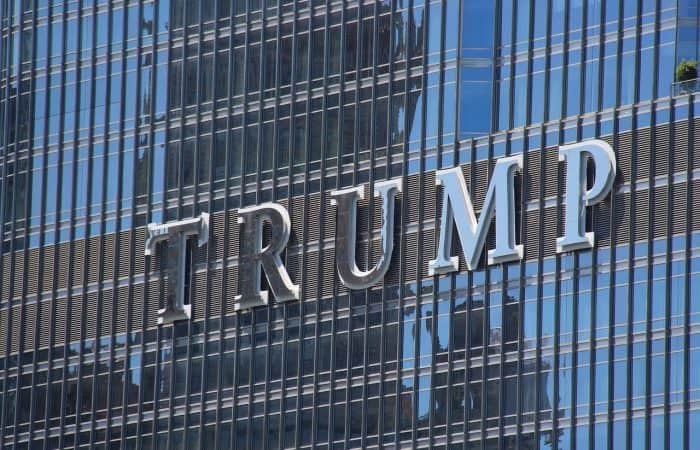From 1 October 2023, the Carbon Border Adjustment Mechanism (CBAM) will be phased in. CBAM is a European regulation that the EU will deploy for border adjustment of carbon emissions released during the production of certain goods outside the EU. CBAM is therefore not aimed at imports from specific countries, but at carbon emissions embedded in the products to be imported.
Introduction of CBAM
CBAM will be introduced in phases. The first phase is a transition period (1-10-2023 – 31-12-2025), which is considered as a learning phase. During this period, importers must prepare a report calculating the emissions released during the production of the imported goods (hereafter: “embedded emissions”).
These embedded emissions consist of:
- Direct emissions released from the production process and from the production of heat used in the production process, regardless of the production location of this heat.
- Indirect emissions released from the production of electricity used in the production process, regardless of the production location of this electricity.
- In some cases, also the direct and indirect emissions from the relevant input materials (precursors).
During this phase, these emission will not be levied yet. The authorities can however impose a fine if the reporting obligation is not fulfilled. The final phase will then start on 1 January 2026.
- From 2026 to 2033, embedded emissions for CBAM goods will be gradually taxed. Free allocations under the EU ETS will be phased out.
- From 2034, 100% of embedded emissions from CBAM goods will be taxed. No free allocations will be given under the EU ETS for these goods.
The first phase of introduction of this mechanism focuses on goods that pose the greatest risk of carbon leakage. These goods are further referred to as CBAM goods and cover the following sectors:
- Cement
- Electricity
- Fertilisers
- Iron and steel
- Aluminium
- Hydrogen
If you import goods classified under one of the commodity codes (CN codes) included in this list, valued more than €150 per shipment, you should continue reading. If your goods do not fall within the scope of this list, you can still continue reading if this topic is of interest to you.
CBAM is part of the Union’s goal to reduce net CO2 emissions to zero by 2050. For the implementation of the Union’s ambitious climate policy, the Commission deemed it necessary to include greenhouse gas emissions released from the production of imported goods. On the one hand, to protect its own industry, on the other, to encourage climate action by countries exporting to the Union.
The regulatory framework follows, as much as possible, the criteria set during the draft of the (current) EU ETS measures (Emission Trade System; the free emission allowances under the EU ETS are being phased out). Based on these criteria, the above-mentioned industry sectors have been selected in this phase. CBAM is therefore not focused on imports from specific countries, but on the carbon emissions embedded in the products to be imported. The system complies with the rules established in the WTO.
Before the end of the transition period (i.e. before the end of 2025), the EU Commission will consider extending the scope to other goods at risk of carbon leakage, including organic chemicals and polymers, in order to include all goods covered by the EU ETS by 2030.
Declaration system
The CBAM system is based on a declaration/reporting system. This system follows the procedures of the Union Customs Code (UCC). The CBAM Regulation makes the “CBAM declarant” or “Reporting declarant” responsible for the declaration. Basically, this is the importer. The UCC does not have its own definition of “Importer”, but Article 3(15) of the CBAM Regulation defines it as follows:
“the person lodging a customs declaration for release for free circulation of goods in its own name and on its own behalf or, where the customs declaration is lodged by an indirect customs representative in accordance with Article 18 of Regulation (EU) No 952/2013, the person on whose behalf such a declaration is lodged.”
The declaration can therefore be submitted by:
- The importer himself; or
- The indirect (customs) representative
In both cases, these declarants must submit an application for an authorisation to the Dutch Emissions Authority (NEa), in order to obtain the status of “authorised CBAM declarant”. Are you not established within the EU? Then only an indirect representative can act as an importer of CBAM goods and fulfil the regulation’s obligations for you.
Reporting during transition phase
Importers must report imports of CBAM goods (value per shipment > €150) to the EU Commission from 1 October 2023 onwards. No further (financial) obligations exist at that time. The report must be submitted digitally via an IT system of the European Commission, no later than one month after the end of the quarter in which the import took place.
On its website, the Dutch Emissions Authority provides clear information regarding this legislation and regarding some guidance issued by the European Commission. In order to help the importer prepare the calculations for the reports, the commission has prepared a “communication Template”. If your company imports CBAM goods, it is recommended to consult this information in time, as the reporting requirements for the importer are far from simple.
End of transition period
The transition period will end on 31 December 2025. From that date onwards, a levy will be imposed on CBAM goods. To meet the levy obligations, the importer will have to purchase CBAM certificates covering the embedded emissions of the imported CBAM goods. In order to import CBAM goods, purchase CBAM certificates and submit CBAM declarations, a specific licence is required to become an ‘authorised (CBAM) declarant’. In the Netherlands, this licence will be issued by the Dutch Emissions Authority to Union-based importers or representatives acting on behalf of one or more importers.
Embedded emissions that will be included in the levy are calculated using the methodologies set out in Annex IV of Regulation (EU) 2023/956. For certain goods, only direct emissions will be calculated. The authorised CBAM declarant must keep records of the information needed to calculate the embedded emissions according to Annex IV of the Regulation. In addition, these records must be sufficiently accurate to enable verification in accordance with the established verification principles.
What to do now?
Although the agreement (between EU member states) has not yet been reached on all details of CBAM, this levy will without a doubt be introduced. Importers should therefore be prepared for the reporting obligation during the transition period and the future levy. In order to prepare oneself, the following actions can be taken:
- The importer should determine whether imported products currently qualify as CBAM goods.
- What is the origin of these goods;
- What is the value and volume per shipment of these goods;
- Who are the producers of the imported goods.
- What information or data is required regarding the imported CBAM goods, for the calculation of the embedded emissions and in order to meet the reporting requirement;
- If the goods are purchased directly from the producer, the producer can be contacted to provide the necessary information.
- If the goods are not purchased directly from the producer, it must be determined which actor in the supply chain can provide the necessary information.
- The reporting obligation, keeping of records and, to that end, storage of information, should be embedded in the importer’s organisation.
- It is recommended to incorporate the design and maintenance (there bound to be changes) in your organisation;
- Given the importance of the obligation requirement and the future levy, we also recommend making the business processes to be developed part of the company’s internal control procedures, to ensure compliance with legislation;
- If you, as an importer, apply for a license as an ‘authorised CBAM declarant’ yourself, a draft should be made for preparing the quarterly declarations;
- When outsourcing the reporting obligation, agreements must be made with the third party responsible for the reports.
In conclusion
The first formal (administrative) obligations under CBAM came into force on 1 October 2023. From 1 October 2023, goods within the scope of CBAM must be reported. During the transition period, until the end of 2025, CBAM will only comprise a reporting requirement for the authorised CBAM declarant, without a tax being due.
For companies that import (or depend on the import of) goods (expected to be) covered by CBAM, it is essential to understand the potential impact of the costs of CBAM on their supply and value chain. This requires a close look at the compliance requirements under CBAM.
More information
If you have any questions regaring the content of this article, please feel free to contact us:




